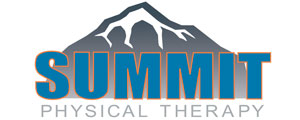By Matthew Repko, PT, DPT, Altoona Center
 Running has become an increasingly popular mode of exercise and for good reason. It is a cheap and relatively quick workout, and does not require much practice or skill.
Running has become an increasingly popular mode of exercise and for good reason. It is a cheap and relatively quick workout, and does not require much practice or skill.
While the health benefits of running are many, so are the risks for injury. Most injuries are preventable, but many of us do not address them until they become an issue. Then it is an uphill battle to get back to our pre-injury levels.
Whether you’re a savvy veteran, weekend warrior or merely interested in starting to run more regularly, you can take steps to decrease your injury risk and prepare your body for the stress that running puts on it.
Check Your Footwear
Make sure your footwear fits properly and has adequate support. If you choose to wear shoes (some runners prefer minimalist footwear or even bare feet), make sure they are the correct size and support your foot type. An experienced physical therapist can help you determine which shoe best suits your foot type and running style.
Warm Up Those Muscles
So your shoes are tied, your Fitbit is charged, and you’ve posted on social media that you’re going on a run. Before you hit the road, however, take five minutes to warm up.
- Dynamically stretch . This involves slow, controlled movements throughout the entire range of motion for a joint. A good dynamic stretching routine will help improve blood circulation to muscles and muscle elasticity and your nervous system will be ready to sustain a longer, more enjoyable run. These movements should be similar to the activity you are about to perform. A routine might comprise walking lunges, walking hamstring stretches, side lunges, and walking knee hugs. Along with improving circulation and muscle elasticity, they will ready the nervous system to sustain a longer, more enjoyable run.
- Start by walking. Walking takes the joints, tendons and muscles through a range of motion similar to what they will experience with running. This will improve blood and oxygen flow to the muscles that is necessary for running. Take the first three minutes and progressively increase your walking speed until you initiate jogging or running.
Breathe
Regulating your breath early will set the tone for the rest of the run. Breathing in through the nose and exhaling through the mouth will allow for optimal lung perfusion, thus optimal oxygenation of blood going to working muscles. Focusing on this early will help you sustain proper ventilation as a run progresses and fatigue sets in.
Listen to your body
Many of us have experienced a quick, sharp pain that comes on quickly as we start to run, but if you have aches or pains that do not dissipate as your run progresses, slow down or walk. Do not ignore sharp, burning or shooting pain: this is your body’s way of telling you that the movement is incorrect.
If you experience pain consistently when running, a physical therapist can help you correct faulty movement patterns that may be the cause.
With these preventive steps addressed, you’re ready to take advantage of those health benefits associated with running.
